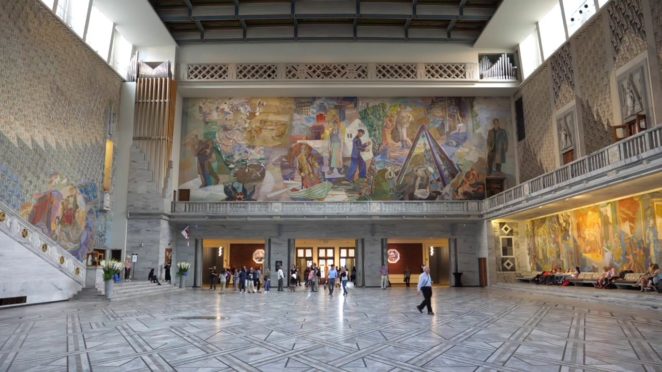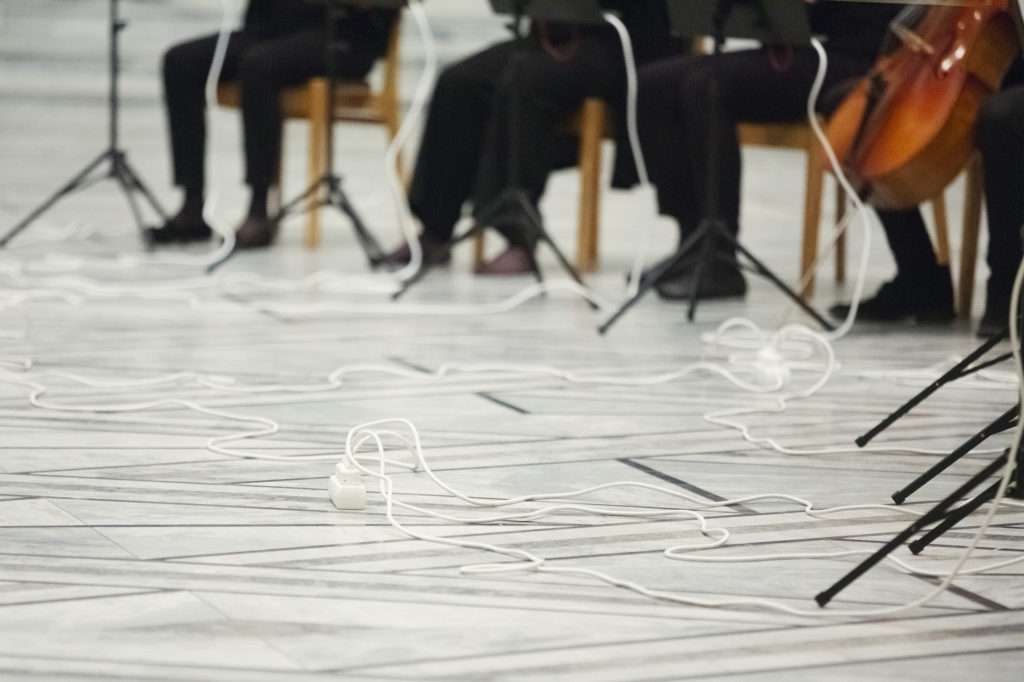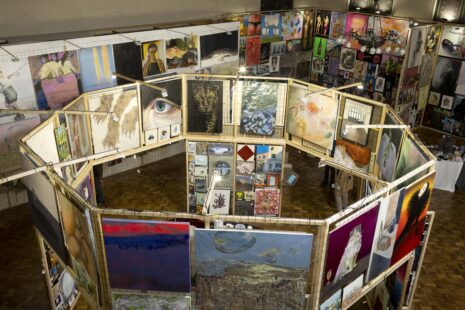With all of us now living in socially distanced self-isolation and taking into consideration official guidance related to Covid-19, the biennial programme continues to investigate the subtle and myriad ways in which people encounter art in public space and the public sphere. The spring programme will start with an exploration of sound environments with works by Norwegian artists Alexander Rishaug and Øystein Wyller Odden.
Y (59 ° 54’54.76 ″ N 10 ° 44′46.03 ″ Ø)
What does a building sound like after a terrorist attack? Norwegian artist Alexander Rishaug explores in his sound recordings captured in different spaces in H-Blokka, a building targeted by the car-bomb that tore through Oslo’s government quarter on July 22, 2011, killing eight people. The coordinates in the title refer to the geographical position of its adjoining highrise, Y-blokka, which is scheduled for demolition. Since 2011, Y-Blokka and H-Blokka sit empty, a poignant reminder of the city’s collective trauma.
The destruction caused by these terrible explosions was devastating and what fills these buildings now is a silence that surpasses its spatial dimensions, a silence that speaks of a before and an after.
Y (59 ° 54’54.76 ″ N 10 ° 44′46.03 ″ Ø) was recorded throughout two nights in October 2017 and created a sonic portrait of the abandoned building’s current state of haunted emptiness, irrevocably connected to the past. Rishaug’s audio artworks capture both memory and place. Through acoustics, resonance, frequencies, vibrations and sub/ultrasounds that are not typically audible to the human ear, the artist reveals how absence is evoked by the sound of silence, a reminder of both earlier human activity and how it ceased.

Y (59 ° 54’54.76 ″ N 10 ° 44′46.03 ″ Ø) will be released as a vinyl LP with a suite of eight tracks, each lasting precisely eight minutes and accompanied by a booklet with photos from H-Blokka and a text by Rishaug. The release will coincide with a unique online launch, hosted by osloBIENNALEN FIRST EDITION 2019–2024 on May 25, marking the anniversary of the biennal’s first public launch.
Compositions for Oslo City Hall
Øystein Wyller Odden’s work addresses the relationship between technology, architecture and people, investigating and exposing their underlying structures. These two pieces were conceived for the first edition of osloBIENNALEN and performed in Oslo City Hall, home to the annual award ceremony of the Nobel Peace Prize, as well as immense frescoes by Alf Rolfsen and Henrik Sørensen’s enormous painting. A controversial space—“no building divides the city more”—it is, as described by Norwegian critic and writer Arve Rød, an area that is at once “monumental and ostentatious… sombre and unapproachable… truly a cathedral dedicated to profane forces.”
Power Line Hum (Composition for the Organ in Oslo City Hall) takes as a starting point the history of the pipe organ in Oslo City Hall. When the building was built, the elaborate pipe organ originally planned was deemed too expensive and replaced by a Hammond organ. However, the pipes remained as decoration, a “silent facade,” and, for Power Line Hum (Composition for the Organ in Oslo City Hall), several were made functional by the organ builders Ryde & Berg.

Power Line Hum / Composition for the Organ in Oslo City Hall) 2019
A wind system was installed to give air to the pipes and the Hammond organ was refurbished. The work contains the sound of these two organs, the previously silent and its electronic replacement, each playing the same chord. It was played over several months in Oslo City Hall and reproduced the low humming bass sound made by electricity at a frequency of 50 Hz. This low hum, with the resonances and harmonics creates in the fuse box, has been transcribed by the artist for reproduction on the organ.
The reproduced hum of the current is the sound of modern society and enters into a dialogue with the social-realist art of previous eras presented in the City Hall.
Kraftbalanse [Power Balance] (Composition for Piano, Alternating Current and Orchestra) was co-composed with Jan Martin Smørdal and performed twice throughout the biennial in Oslo City Hall. In this monumental space, a dramatic soundscape of a grand piano and a string orchestra responded to fluctuations in current frequency, creating a portrait of power distribution, both of the transmission of electrical power to the country by Statnett, Norway’s state-owned company responsible for the power grid, and, ultimately, the income of the City of Oslo.
Video and audio material from Øystein Wyller Odden’s sound compositions, Kraftbalanse and Power Line Hum, will be broadcast online in May. Power Line Hum will be accessible online from May 5–10, while Kraftbalanse will premiere online on May 12, and will play every day until May 16. Each will be accompanied by a series of exclusive online events, including a live-streamed conversation with the artist and the biennial’s curators.









